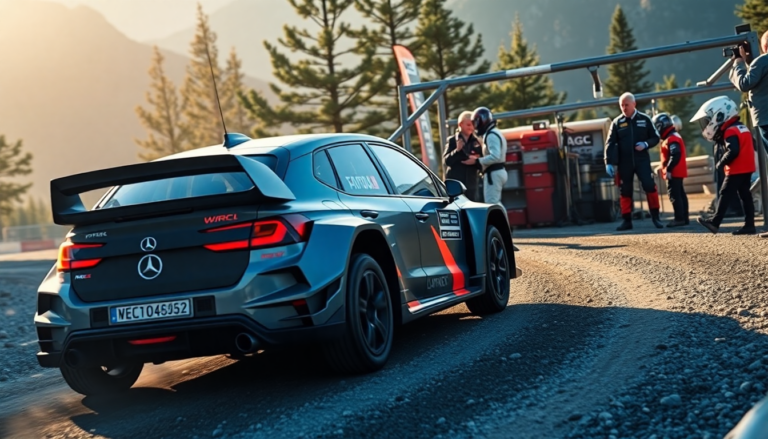Argomenti trattati
Understanding the rally pyramid and its evolution
The FIA is set to overhaul the entire rally structure by 2027, introducing new technical regulations that will significantly impact the World Rally Championship (WRC). Currently, the rally hierarchy consists of five distinct classes, with Rally1 at the top, followed by Rally2, Rally3, Rally4, and the entry-level Rally5. Each class serves a unique purpose, catering to a range of competitive levels within the sport.
The Rally2 category, which holds the distinction of being the highest class in many international championships, is particularly noteworthy. It showcases a balance of performance and accessibility, making it a popular choice among drivers. Meanwhile, Rally3 and Rally4 provide additional tiers for emerging talent, with Rally4 often serving as a stepping stone for junior competitors. The current structure has its merits, but the FIA recognizes the need for a fresh approach as they gear up for the introduction of WRC27.
The WRC27 initiative: What to expect
Provisionally called WRC27, the new generation of rally cars will aim to align more closely with the existing Rally2 models in terms of both cost and performance. This shift is designed to make the sport more sustainable and accessible, providing a clearer pathway for aspiring drivers to compete at higher levels. While the FIA has yet to finalize the details of the new pyramid, the intention is clear: Rally1 will be phased out, necessitating a comprehensive redesign of the entire classification system.
Xavier Mestelan Pinon, the FIA’s technical director, has emphasized the importance of this transition: “We will build a new rally pyramid.” The challenge lies in determining which class will precede the top-tier category and whether adjustments to existing categories like Rally3 are necessary. This agile approach highlights the FIA’s commitment to refining the sport while considering the evolving demands of both competitors and fans.
Challenges and considerations for the future
As the FIA embarks on this major overhaul, several factors must be taken into account. One significant point of discussion revolves around the powertrains that will be utilized in these new vehicles. For at least the initial year of the new regulations, the focus will remain on internal combustion engine (ICE) vehicles, with potential future shifts towards alternative powertrains. This decision reflects a cautious approach to electrification within the sport.
Mestelan Pinon has expressed reservations about the immediate implementation of electric powertrains in lower categories, citing cost concerns and the need for a thrilling spectator experience. “Rally is also to make a show,” he remarked, indicating that fan engagement remains a top priority in the decision-making process. The sound and spectacle of traditional rally cars are integral to the sport’s appeal, and any transition to electric technology must carefully balance these elements.
Safety and the evolution of rally technology
Safety is another critical aspect that the FIA must address as it navigates the future of rally racing. Unlike circuit racing, which takes place on controlled tracks, rally events traverse vast, often remote areas. This presents unique challenges in terms of managing vehicle safety and ensuring rapid response in the event of an incident. Emilia Abel, the FIA’s road sport director, highlights the complexities involved in regulating safety standards for vehicles that operate far from service parks.
While the potential for electric vehicles in rally racing exists, particularly with advancements in technology, both Mestelan Pinon and Abel agree that the current landscape may not be conducive to their immediate adoption. As they look ahead, the FIA is committed to exploring options that enhance the sport while prioritizing the safety and experience of all participants.
The road ahead for WRC27
The WRC27 initiative represents a pivotal moment in rally racing, as the FIA seeks to redefine the sport’s framework and regulations. With a focus on sustainability, accessibility, and thrilling competition, the changes ahead aim to invigorate the rally community and attract new fans. While the transition may present challenges, the opportunities for innovation and growth within the sport are vast.
As the FIA continues its discussions and finalizes the details leading up to 2027, rally enthusiasts can look forward to an exciting new chapter in the World Rally Championship. The changes promise to bring a fresh perspective to rally racing, ensuring it remains a dynamic and captivating spectacle for generations to come.

